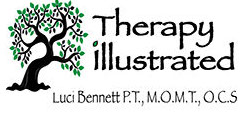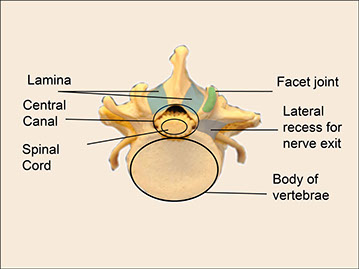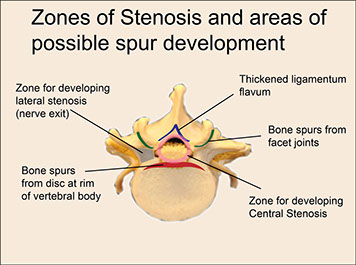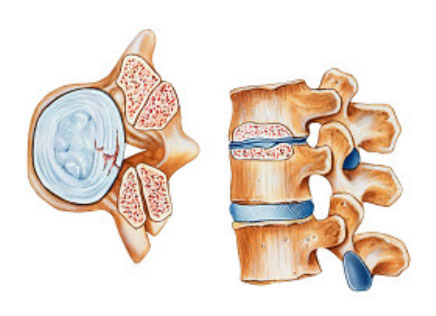


Spinal Stenosis
Spinal stenosis is the narrowing of the central canal or the lateral recesses where the nerves exit. This narrowing is caused by bone spur formation and results in compression on the spinal cord and /or the nerve roots.
The central canal is the hole in the center of the spine where the spinal cord runs through. In front of the canal, there is the body of the vertebrae with the disc sitting on it. The sides of the canal are where the facet joints sit and the back arch is formed by the lamina which meet and form the spinous process. There are ligaments that connect between the lamina called the ligamentum flavum as well as the interspinous ligaments.


As the spine ages, the edges of the vertebral body as well as the joints can develop bone spurs or osteophytes. These spurs can project into the central canal as well as the lateral canals where the nerves exit the vertebral column. The ligaments become dense and thickened and can also contribute to the narrowing of these canals as well.
Bone spurs and thickening of ligaments occur naturally as we age, but it is difficult to predict the extent or direction that things will change. The degenerative process is accelerated in spines that have sustained damage to the disc or connective tissue support.
Common symptom pattern is back pain and leg pain, tingling, and weakness that is produced with extension type activities and walking. All symptoms are relieved with bending forward or sitting down.
Stenosis is basically a space issue or more specifically, a loss of space. When the spine bends forward, there is an increase in space; therefore, the pressure on the cord and nerves are relieved. When the spine extends, the space is reduced and pain or tingling is produced.

Spinal stenosis isn’t an overnight phenomenon. It develops over the years. Many people never have pain. Some people have low grade pain and stiffness that is manageable. There are cases where people were painfree and then experienced a minor injury that resulted in severe low back and leg pain. Essentially, the muscle spasm and inflammation from a minor injury of a pathological spine results in much higher pain and compression levels.
The contents of BackPainExplained web site including the text, graphics, images, and other material are for informational purposes only. The content of this web site is not intended to be a substitute for professional medical advice, diagnosis, or treatment. Always seek advice of your physician or other qualified health professional with questions you may have regarding a medical condition. Do not delay seeking medical advice or disregard professional treatment advice because of something that you have read on BackPainExplained.
Call your physician or 911 if you think that you have a medical emergency. Reliance on any information within BackPainExplained web site is solely at your own risk.